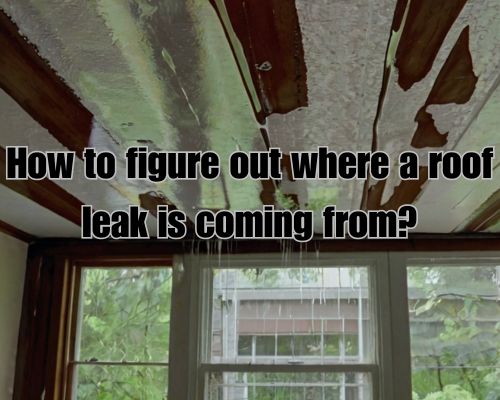
How to Figure Out Where a Roof Leak Is Coming From: Expert Tips and Techniques
How to Figure Out Where a Roof Leak Is Coming From: Expert Tips and Techniques
Discovering the source of a roof leak can be challenging but essential to prevent further water damage. When you notice signs of a roof leak, such as water stains on your ceiling or peeling paint, it’s crucial to act quickly.
To pinpoint the leak, you should start by inspecting for water stains, wet spots, or trails of moisture that can highlight the leak’s origin.

Begin your investigation by observing the areas where the ceiling meets the wall, as these spots often reveal discoloration from the leak.
Utilize a flashlight to carefully examine the attic, if accessible, and search for any signs like mold on insulation, dark spots, or moisture on rafters.
For homes without an attic, look directly above the spot on your ceiling where damage appears, searching for signs of moisture or discoloration on wood or insulation materials.
By understanding these common indicators, you can effectively trace the leak to its source and preserve the integrity of your home.
Identifying Roof Leak Symptoms
When identifying roof leaks, pay attention to signs both inside and outside your home.
Inside, watch for water stains, mold, or a musty smell. Outside, inspect for damaged shingles or faulty flashing. Let us get on through these factors with CJ Commercial Roofing NJ.
Interior Signs of a Leak
Inside your home, several signs can indicate a roof leak.
Water stains often appear on ceilings or walls, usually brown or yellowish in color.
Peeling paint or blistering drywall can occur when moisture seeps through, swelling and damaging the material.
Mold and mildew growth are common in areas with consistent dampness.
You might notice a mildew smell that indicates unwanted moisture accumulation.
Additionally, inspecting the attic insulation for damp spots or signs of water intrusion can provide clues about a leaky roof.
Exterior Inspection for Leak Sources
Conducting an exterior inspection involves looking for common culprits of roof leaks.
Check for damaged or missing shingles, as these can allow water to penetrate the surface.
Inspect the areas around roof penetrations like roof vents, skylights, and chimneys for any gaps that could cause leaks.
Flashing is another critical area to examine.
Damaged flashing or improper sealing can lead to moisture entering through the joints or edges.
Ensure there are no nail holes or areas where water may pool, as these conditions can exacerbate water intrusion problems.
Keep a watchful eye on roof joints and water pooling signs to find a roof leak more effectively.
Repair and Prevention Strategies
Effectively addressing roof leaks involves a combination of repair techniques and preventative measures.
Tackling minor issues yourself can be cost-effective, but knowing when to call a professional like CJ Commercial Roofing NJ protects against larger problems. Maintenance routines help to maintain the roof’s integrity.
DIY Solutions for Minor Repairs
For minor roof issues, you can take several DIY approaches.
Start by inspecting the roof for damaged or missing shingles. If you find any, you can remove the defective ones and replace them.
Use roofing cement to seal small cracks.
Ensure safety by using a sturdy ladder and wearing shoes with good traction.
Check for leaks around plumbing vent boots and skylights.
In many cases, resealing these with silicone caulk can stop leaks.
A water spray test can help identify less obvious leaks.
Enlist a helper to spray water over the roof while you inspect inside for water stains or a musty odor, indicating moisture intrusion.
When to Consult a Professional
While handling small repairs can be manageable, some situations demand expert intervention.
If your roof has extensive damage or signs of structural issues like mold or sagging, consult a professional roofer.
Ice dams, faulty flashing, and leaks involving complex roof structures often require the skills of a professional roofing contractor.
Professional roofers bring the necessary expertise to accurately assess and repair roof damage.
Hiring a professional roofing company ensures proper repair of more complex issues and minimizes the risk of future problems.
Consider professional advice on whether a complete roof replacement might be more cost-effective than repeated repairs.
Maintaining Roof Health
Regular maintenance is crucial in preventing leaks and ensuring your roof’s longevity.
Clean gutters and downspouts routinely to avoid blockages that can lead to water backup and roof damage.
Inspect the roof sheathing and insulation for signs of moisture accumulation, like condensation or water stains.
Ensure that ventilation systems are functioning properly to prevent mold growth and condensation buildup.
Check roof flashing for wear and tear, particularly after severe weather.
Installing preventative measures like heating cables can mitigate ice dam formation. By maintaining your roof’s health, you reduce the likelihood of costly repairs in the future.